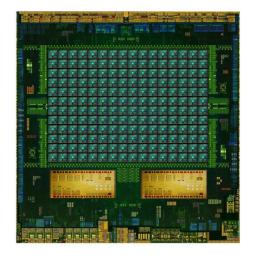
Who's happy about Google's newly-announced Nexus 9 Tablet? Well, lots of folks, but no one is happier than the guys at Nvidia. The Nexus 9 will be the first device to run new Android Lollipop, and
powering it will be the 64-bit version of NVIDIA's Tegra K1.
[The Tegra K1 is] an ARM Holdings v8-based beast with dual 2.3 GHz Denver CPUs, and 192 Kepler GPU cores. That's a huge relief for NVIDIA shareholders, who still remember last year's painful Tegra 4 delays, which enabled Qualcomm's Snapdragon S4 to win a coveted spot in Google's second-gen Nexus 7 tablet.
It's a fast chip, and reportedly
smokes both the Nexus 6 Adreno 420 and Galaxy Note 4 Mali T-760 in GPU tests. Furthermore, Using the superscalar micro-architecture,
these chipsets support Dynamic Code Optimization and use Kepler GPU architecture, which powers some of the world's few fastest gaming PCs and supercomputers.
The pundits claim this new chip, with its kepler architecture
will allow Google to bring state-of-the art graphics to Android for PC and console-class games. At a minimum, it will allow your Angry Birds to fly a hell of a lot faster.
[2014-10-22 19:43 edit: Typo: Nexus, not Nekus]
Does the worsening galactic cosmic radiation environment observed by CRaTER preclude future manned deep-space exploration? That is the conclusion of of a recently published paper that posits
the recent decrease in solar activity has led to increased incidence of cosmic rays, which are dangerously radioactive. That may just put a damper on anyone interested in organizing manned exploration of the Red Planet.
The Sun and its solar wind are currently exhibiting extremely low densities and magnetic field strengths, representing states that have never been observed during the space age. The highly abnormal solar activity between cycles 23 and 24 has caused the longest solar minimum in over 80 years and continues into the unusually small solar maximum of cycle 24. As a result of the remarkably weak solar activity, we have also observed the highest fluxes of galactic cosmic rays in the space age, and relatively small solar energetic particle events. We use observations from the Cosmic Ray Telescope for the Effects of Radiation (CRaTER) on the Lunar Reconnaissance Orbiter (LRO) to examine the implications of these highly unusual solar conditions for human space exploration. We show that while these conditions are not a show-stopper for long duration missions (e.g., to the Moon, an asteroid, or Mars), galactic cosmic ray radiation remains a significant and worsening factor that limits mission durations.
Very interesting and at least for me counter intuitive. I would have thought: Less solar activity means less radiation. But it seems that the solar wind normally has the effect of reducing the amount of dangerous cosmic radiation that can reach the inner solar system. But to that, point, the article points out:
While particles and radiation from the Sun are dangerous to astronauts, cosmic rays are even worse, so the effect of a solar calm is to make space even more radioactive than it already is. Who's happy about Google's newly-announced Nexus 9 Tablet? Well, lots of folks, but no one is happier than the guys at Nvidia. The Nexus 9 will be the first device to run new Android Lollipop, and powering it will be the 64-bit version of NVIDIA's Tegra K1.
Who's happy about Google's newly-announced Nexus 9 Tablet? Well, lots of folks, but no one is happier than the guys at Nvidia. The Nexus 9 will be the first device to run new Android Lollipop, and powering it will be the 64-bit version of NVIDIA's Tegra K1.